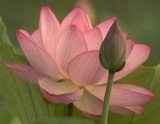 There are two types of Buddhas. And both seemingly reach a level of enlightenment called Nirvana, the end of suffering (while still alive here on Earth) and acquire some supernatural powers. This is a brief about both types of Buddhas.
There are two types of Buddhas. And both seemingly reach a level of enlightenment called Nirvana, the end of suffering (while still alive here on Earth) and acquire some supernatural powers. This is a brief about both types of Buddhas.In the Pali Canon, a collection of 16 volumes containing12,800 pages of translation about communications about the study of Buddha Dharma’s ideaology / spirituality, the transcripts reference two types of Buddhas. These are Samyaksambuddha or Sammasambuddha and Pratyeka Buddha or Paccekabuddha. A brief description of each follows.
Samyaksambuddhas (Pali: Sammasambuddha)
Students of this order reach Buddhahood. Then they teach other people about the truth or enlightenment of Buddha Dharma and teaching his methodology / philosophy / ideology / religion, guiding them to a sense of spiritual awakening. Siddhartha Gautama, referred to as The Historical Buddha, fits in this category type, described as a Samyak-sambuddha.
Pratyekabuddhas (Pali: Paccekabuddha)
Somewhat similar to the Samyaksambuddhas above in that they reach the state of Nervana with powers, this type of Buddha is also known as Silent Buddhas, becuase they decided to not share their knowledge with others.
Disciples of a Sammasambuddha are called Savakas (hearers or followers) or Arahants (Noble One). These terms have slightly varied meanings but can all be used to describe the enlightened disciple. Anubuddha is a rarely used term, but was used by the Buddha in the Khuddakapatha as to those who become Buddhas after being given instruction. Enlightened disciples attain Nirvana and Parinirvana as the two types of Buddhas do. The most generally used term for them is Arahant.
One 12th century Theravadin commentary uses the term Savakabuddha to describe the enlightened disciple. According to this scripture there are 3 types of Buddhas. In this case, however, the common definition of the meaning of the word Buddha (as one who discovers the Dhamma without a teacher) does not apply any more. Mainstream Theravadin and Mahayana scriptures do not recognize this term and state there are only two kinds of Buddha.
Tony Ha is a freelance writer who writes about buddhism. He loves to write about buddhism & he thinks about the pali canon a lot.




No comments:
Post a Comment